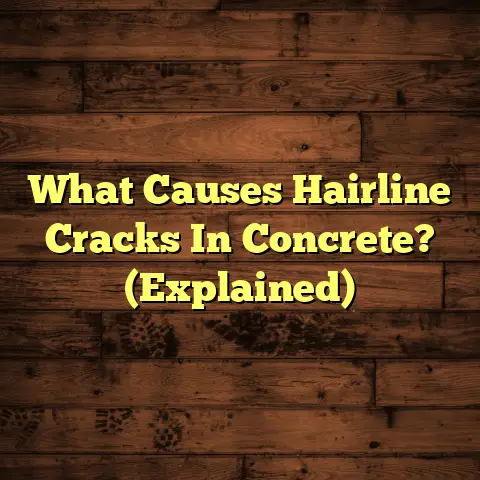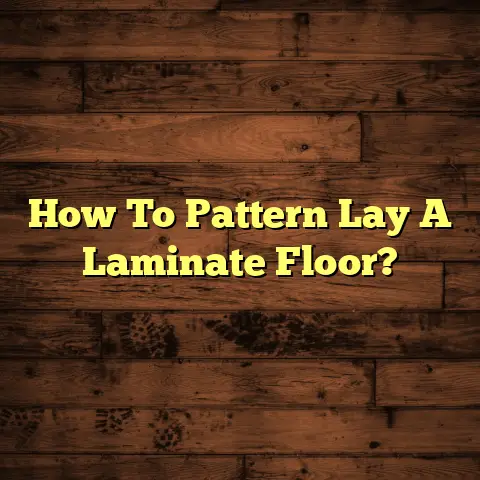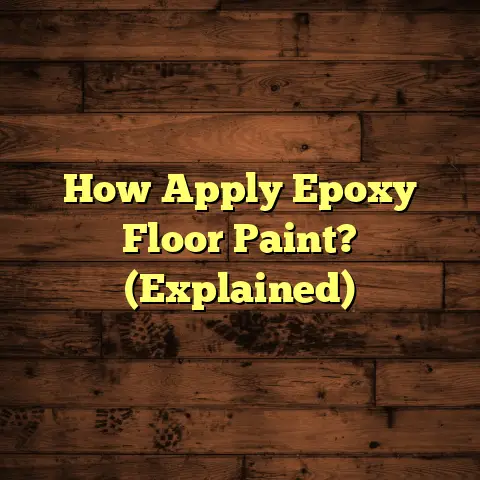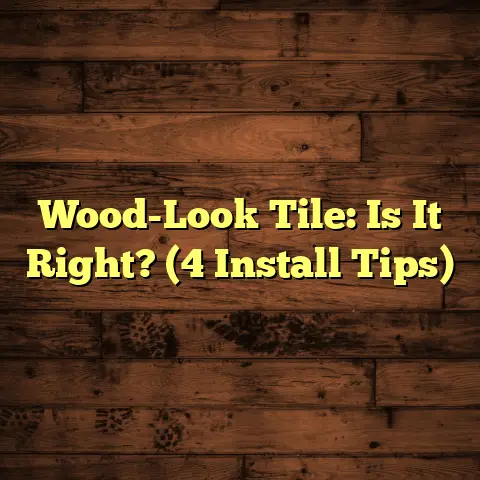Esd Flooring Cost Per Square Foot (Explained)
When considering the installation of ESD (Electrostatic Discharge) flooring, it’s essential to have a clear understanding of the costs involved.
ESD flooring is crucial in environments like electronics manufacturing and clean rooms, where static electricity can damage sensitive equipment.
This comprehensive guide will break down the various factors affecting the cost of ESD flooring installation, provide detailed cost estimates for different scenarios, compare it with alternative flooring options, and offer maintenance tips to ensure long-lasting performance.
Major Cost Factors Impacting ESD Flooring Installation
Several key factors influence the overall cost of installing ESD flooring.
Understanding these can help you budget effectively for your project.
1. Area Size
The size of the area to be covered is one of the most significant determinants of total cost.
Larger areas generally cost less per square foot due to economies of scale.
2. Type of ESD Flooring
ESD flooring comes in various materials, including vinyl, tile, and rubber.
Each type has different price points:
- Vinyl ESD Flooring: Typically ranges from $2 to $6 per square foot.
- Tile ESD Flooring: Usually falls between $3 and $10 per square foot.
- Rubber ESD Flooring: Can range from $4 to $12 per square foot.
3. Labor Costs
Labor costs vary significantly based on geographical location and the complexity of installation.
Professional installation can add anywhere from $2 to $8 per square foot, depending on local labor rates and the intricacies of the job.
4. Additional Considerations
- Floor Removal: If existing flooring needs to be removed, expect an additional cost of $1 to $3 per square foot.
- Subfloor Replacement: If the subfloor is damaged or unsuitable, replacement may cost an extra $2 to $5 per square foot.
- Material Grade: Higher-grade ESD flooring materials will naturally cost more than standard options.
- Room Size/Layout: Oddly shaped rooms or those requiring extensive cutting can increase labor costs.
- Installation Type: The method of installation (glue-down, interlocking, etc.) can also impact costs.
Detailed Cost Breakdown
Cost Estimates for Different Project Sizes
Comparison with Alternative Flooring Options
Signs That Hardwood Floors Need Replacement
While this guide focuses mainly on ESD flooring, it’s worth noting that many businesses also consider hardwood flooring for various applications.
Here are some signs that hardwood floors may need replacement:
- Deep Scratches and Gouges: If refinishing doesn’t restore the floor’s appearance.
- Severe Cupping or Crowning: Indicates moisture issues that may require replacement.
- Warping: A common issue due to water damage.
- Persistent Odors: Often a sign of underlying damage or mold.
Pros and Cons of ESD Flooring
Pros
- Static Control: Essential in environments where static discharge can damage electronic components.
- Durability: Many types are designed for heavy traffic and resist wear.
- Easy Maintenance: Generally easy to clean and maintain.
Cons
- Cost: Higher initial investment compared to other flooring options.
- Installation Complexity: Requires skilled labor for proper installation.
- Limited Aesthetics: May not have as many design options as other flooring types.
Professional Installation vs. DIY
Professional Installation
Hiring professionals ensures that the flooring is correctly installed, reducing the risk of issues down the line.
However, this comes at a premium cost.
DIY Installation
While DIY can save money, it requires a certain skill level and the right tools.
Poor installation can lead to costly repairs later.
Cost Analysis
- Professional Installation: Typically adds $2 – $8 per square foot for labor.
- DIY Installation Tools: Tools may cost around $100 – $500 depending on what’s needed (e.g., flooring nailer, underlayment).
Questions to Ask Hardwood Flooring Contractors
When considering hiring a contractor for your ESD flooring project, ask the following questions:
- What is your experience with ESD flooring installations?
- Can you provide references from previous clients?
- What warranty do you offer on your work?
- How do you handle unexpected issues during installation?
- What type of materials do you recommend for my specific needs?
Hardwood Floor Care and Maintenance Tips
To maximize the longevity of your hardwood floors (or ESD flooring), follow these care tips:
- Regular Cleaning: Sweep or vacuum frequently to remove dirt and debris.
- Moisture Control: Keep humidity levels consistent to avoid warping.
- Use Proper Cleaning Solutions: Avoid harsh chemicals; use products designed for hardwood or ESD surfaces.
- Protect from Furniture: Use felt pads under furniture legs to prevent scratches.
- Schedule Professional Inspections: Regularly check for signs of wear or damage.
Conclusion
Understanding the costs associated with ESD flooring installation is crucial for making informed decisions about your project.
With careful consideration of factors like area size, material type, labor costs, and the pros and cons of different flooring options, you can create a budget that works for your needs.
Whether you opt for professional installation or decide to tackle it yourself, being well-informed will help ensure that your investment in ESD flooring pays off in the long run.
By asking the right questions and following proper maintenance guidelines, you can keep your floors looking great and performing well for years to come.





